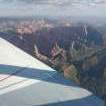Overhead vent upgrade project
-
Members Online
- exM20K
- good2eat
- ArtVandelay
- bluehighwayflyer
- N201MKTurbo
- Hank
- Niko182
- Crawfish
- Brad B
- Pierre07
- jcolgan
- Captainhog
- 802flyer
- Lax291
- Mooney in Oz
- hammdo
- bradp
- eman1200
- Mooney-Shiner
- skydvrboy
- Rick Junkin
- patrickf
- Aviationist
- Ragsf15e
- Matthew P
- M20S Driver
- 201er
- Aerodon
- FoxMike
- rturbett
- DCarlton
- gdwinc
- 1980Mooney
- Planegary
- 201Steve
- donkaye
- richardbrochu27
- will1874


Recommended Posts
Join the conversation
You can post now and register later. If you have an account, sign in now to post with your account.